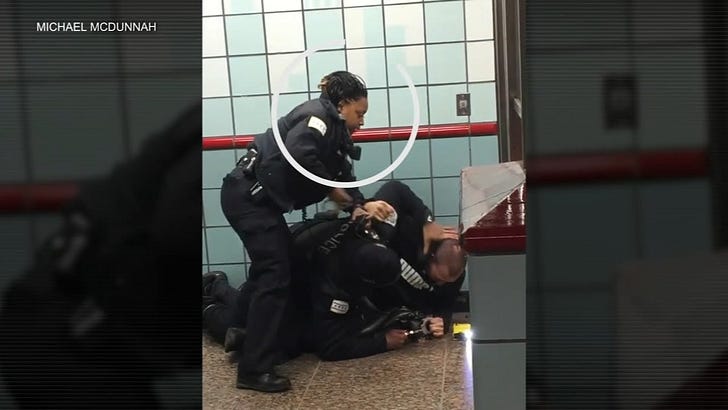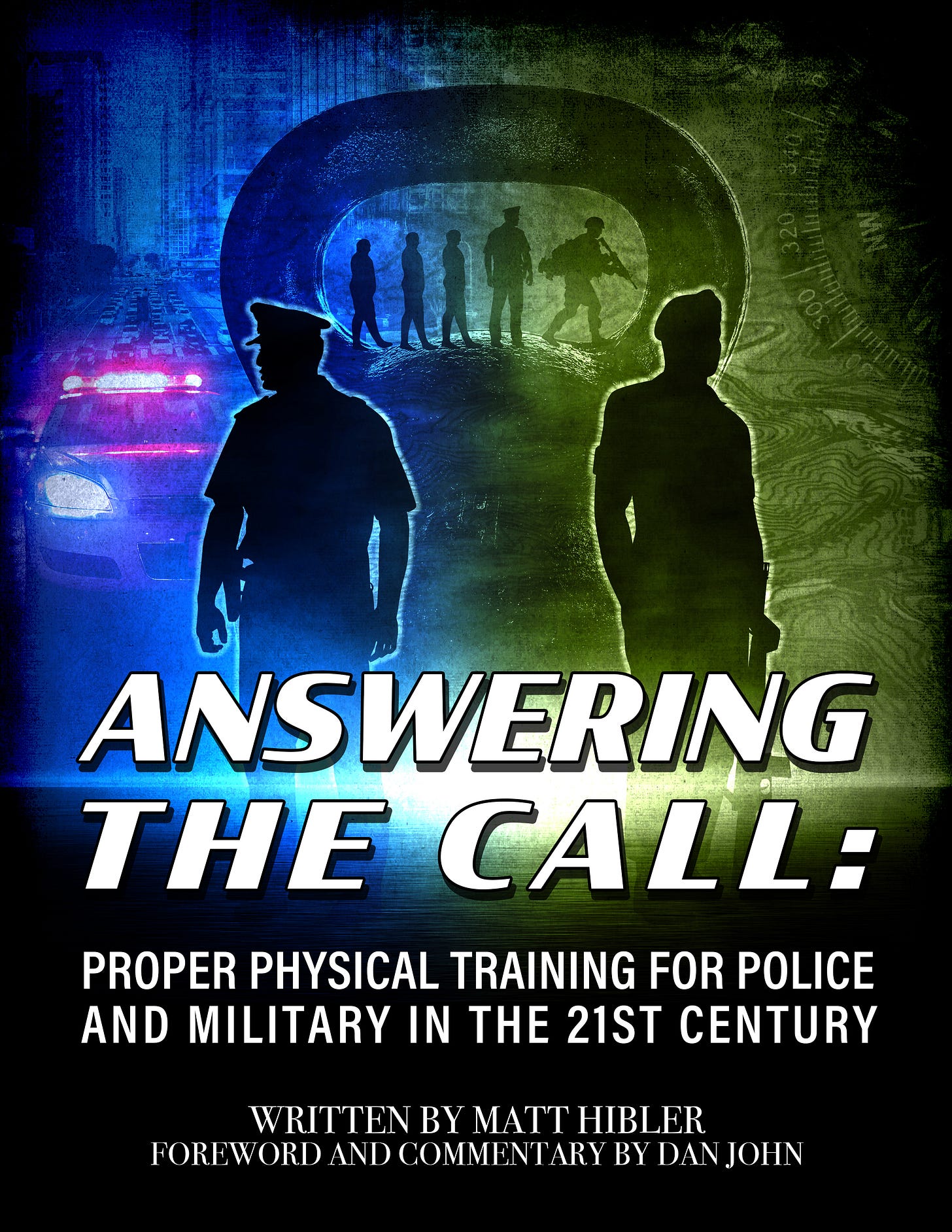A Baseline Fitness Standard For Patrol Officers- While Some Major Departments Lower Them.
Why physical standards are crucial to maintain in law enforcement...and why they should be raised.
I’ve written previous articles on the rising violent crime rate in the United States. I’ve written on who it’s impacting and where it is overwhelmingly occurring. I’ve even introduced solutions I think reasonable people would be willing to entertain. Regardless of what you think is contributing to this, if we are going to have police in our society I think most citizens want competent, intelligent, and fit officers doing the job. As staffing shortages worsen at metropolitan departments across the county, and violent crime continues to disproportionately impact certain communities...what has been the strategy to hire more officers?
Lower standards.
The New York City Police Department recently dropped the 1.5 mile run time standard for cadets to graduate their academy. Training Chief Juanita Holmes cited the 14:21 standard- a task any cop should be able to roll out of bed and complete- as disqualifying to otherwise qualified applicants. I can rephrase that as unqualified applicants were now made qualified. In the army the 12 mile ruck standard is 3 hours with 35lbs of load plus water- which is 15 minutes/mile...for 3 hours. I know cops aren’t soldiers, but that NYPD standard is more than doable and was fine up until this year.
Leading up to the Tyre Nichols tragedy, Memphis Police relaxed their hiring standards per abc News:
“The department offered new recruits $15,000 signing bonuses and $10,000 relocation allowances while phasing out requirements to have either college credits, military service or previous police work. All that's now required is two years' work experience — any work experience. The department also sought state waivers to hire applicants with criminal records. And the police academy even dropped timing requirements on physical fitness drills and removed running entirely because too many people were failing.”
This job requires one to carry a gun while navigating complex and rapidly evolving situations…often requiring split second decision making. Does that mean we need less experienced, out of shape people with questionable backgrounds? Even during a hiring crisis? Then we’re supposed to be shocked with incidents like this?
How can training improve if our officers aren’t even fit enough to do realistic scenario based training? If an officer is in such poor shape (I’d argue correlates with being poorly trained) he or she could be so exhausted in a physical altercation they might have to use more force to get control of the situation. How can this look when officers struggle to control a suspect when training and fitness become an issue?
The more graphic and extended video can be found here. The suspect appears he was originally stopped for illegally moving between cars on Chicago’s Red Line. He was also charged with drug possession; providing some context for why he was resisting. I am not giving these officers a pass, I am just stating the totality of the circumstances. I am not sure based off the video these officers were even remotely prepared to handle this situation. If they did have proper training they weren’t fit enough to execute when it mattered. I’m not even sure they were even fit enough to execute proper training.
Dan John, who was kind enough to write the foreword of my new book and provide his commentary, also mentions his use of standards in one of the sections he wrote. Dan states he uses standards for one reason: highlight to athletes where they are lacking. When I apply this to policing...it doesn’t mean if someone can’t hit a physical standard they shouldn’t be a cop...it just means they aren’t ready now and need to improve their general fitness.
Everyone gets touchy about standards. It’s hard to nail down something that fits every situation. Especially with policing as we’re typically hiring from “normal” populations. Asking Mike who was a great football player in high school to hit a 4.4 40 yard dash time isn’t always feasible. These need to achievable and have some built in brakes to also address body composition.
After taking the new Army ACFT, I think policing needs to head this direction. Albeit I don’t think direct application would work, but measuring total body strength and aerobic fitness would be a great starting point. This would be challenging to instill at every department due to shrinking budgets, but I think if fitness standards are prioritized- not just for recruits but also for annual testing for already sworn officers...the money will materialize.
Ideas for an LEO Fitness Standard:
“You go to war with the army you have, not the army you might want or wish to have at a later time.”
-Donald Rumsfeld
We have to meet this profession where it is at. I would love for these to be higher but I don’t think a large portion of the law enforcement community is ready yet. A starting point:
1.5 x Body-Weight Trap Bar Deadlift x 3 (I’ll even go with using the high handles on the bar)
.3 x Body Weight Single Arm Overhead Press x 3 ea
1 Strict Pull Up- Yes, just one.
Then:
The daunting 14:21 1.5 mile run
or
800m run- In full uniform and equipment- In 4 Minutes or less
For my fit police officers and military reading this…I know these standards aren’t that high, but we need to start somewhere.
Why are most of the tests based off relative strength?
The heavier you get, the harder this test gets if you don’t train.
We are recruiting from the general public. I know the street doesn’t have weight classes but please reread number one.
I chose the aerobic standards above because I think they’re reasonable and can be achieved through various aerobic training modalities, not just high volume running. In fact, with some properly programmed circuit training you wouldn’t even have to train the run if you’re just active. Odds are high you can pass the strength events if you aren’t extremely overweight, and you at least do something in the weight room. I chose the single arm press because it requires total body tension when done properly. If someone is hell bent on having a horizontal press in the assessment, then do single arm DB/KB bench presses.
How can the intersection of fitness and proper training look?
Let’s say a reasonable fitness standard is upheld for police, and their fitness allows them to train hard and handle the stress of taking someone into custody? Remember the video from Chicago above. Now compare it to this video:
I don’t have a heart rate monitor on these officers or know their mile times, but I think it’s pretty clear there is a difference in appearance of the exhausted officers in the subway vs these officers fighting armed suspects.
The officers react with controlled aggression, skill, and economy of movement. In the second incident in Tulsa the officers communicate seamlessly; controlling the suspect until he’s disarmed. Obviously these guys spent some time on the mat and in the gym. I think most reasonable people are supportive of this kind of police work. Those cops put themselves in more danger by handling it the way they did, and the only thing that saved those armed men was the training those cops did and their fitness.
The standard I am proposing is a MINIMUM. I think this could be the start as a gate for hiring and then as the culture changes at departments the minimum could be raised for sworn officers. TAC/SWAT teams should (and typically do) have a higher standard.
Ideas like this will have to start from the bottom up. Set the tone for hiring the right people for the job to address the current violent crime wave. Answer the call of 21st century policing through improved training and fitness standards
Comment below with your thoughts on the proposed standard above or with your own.




